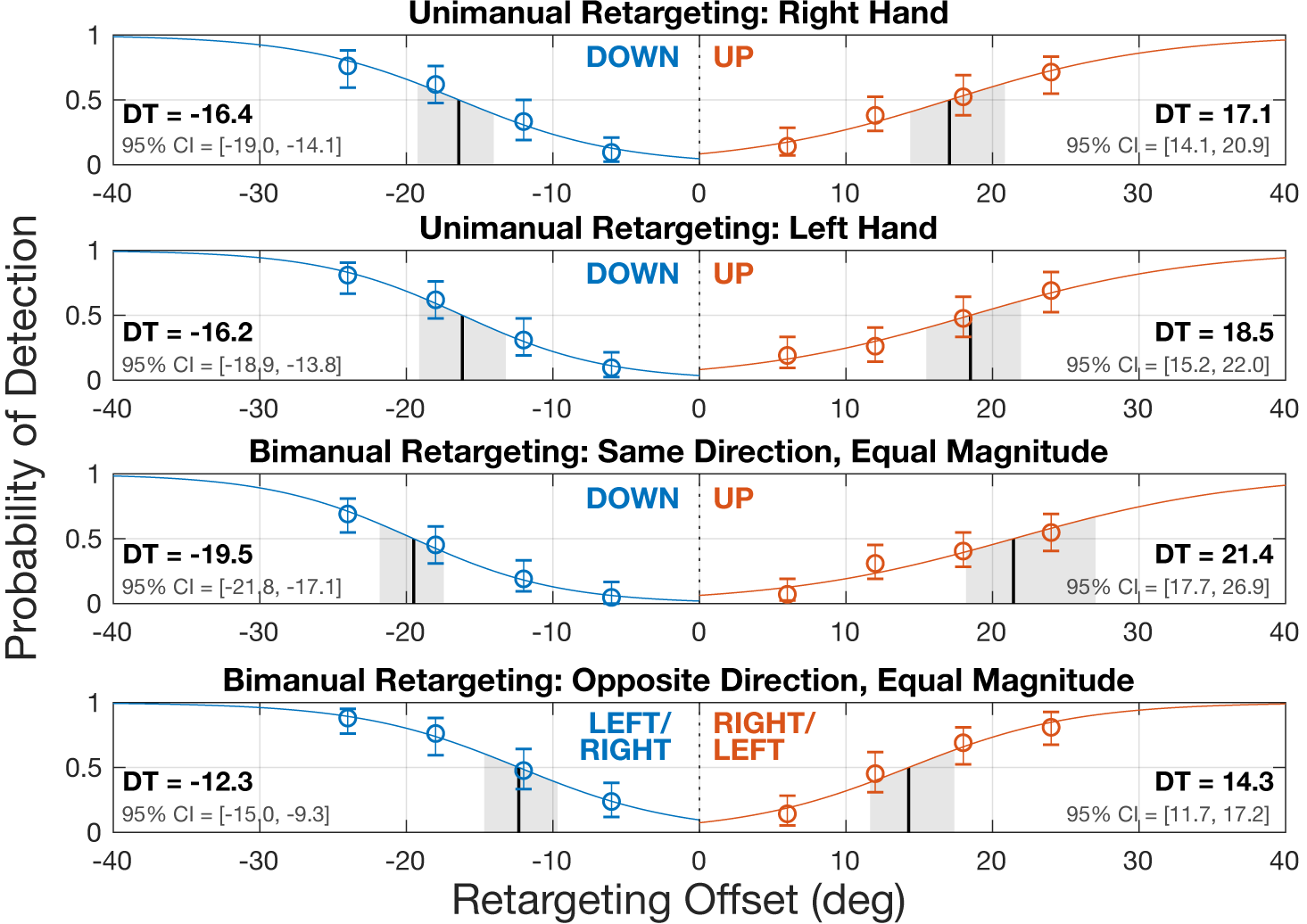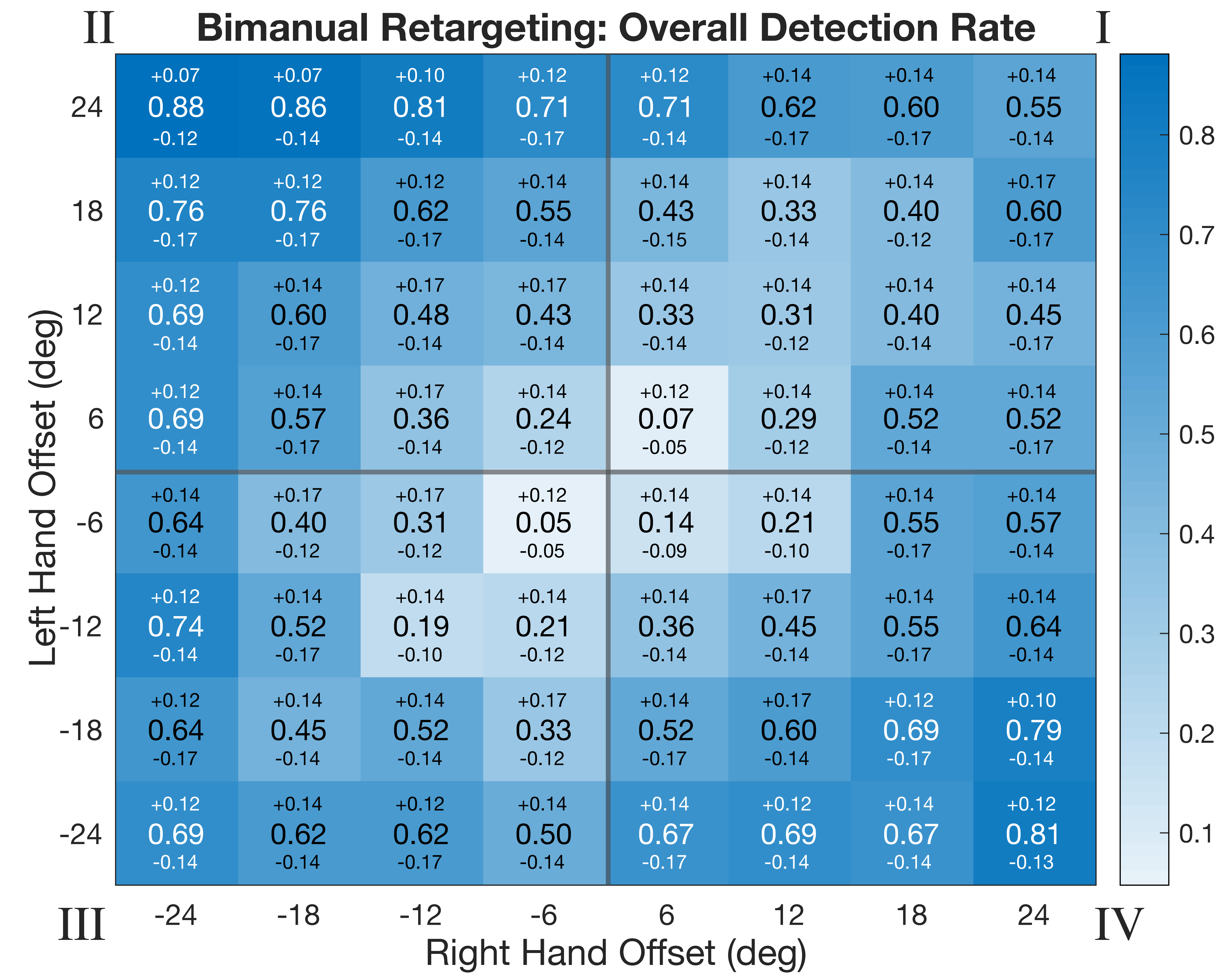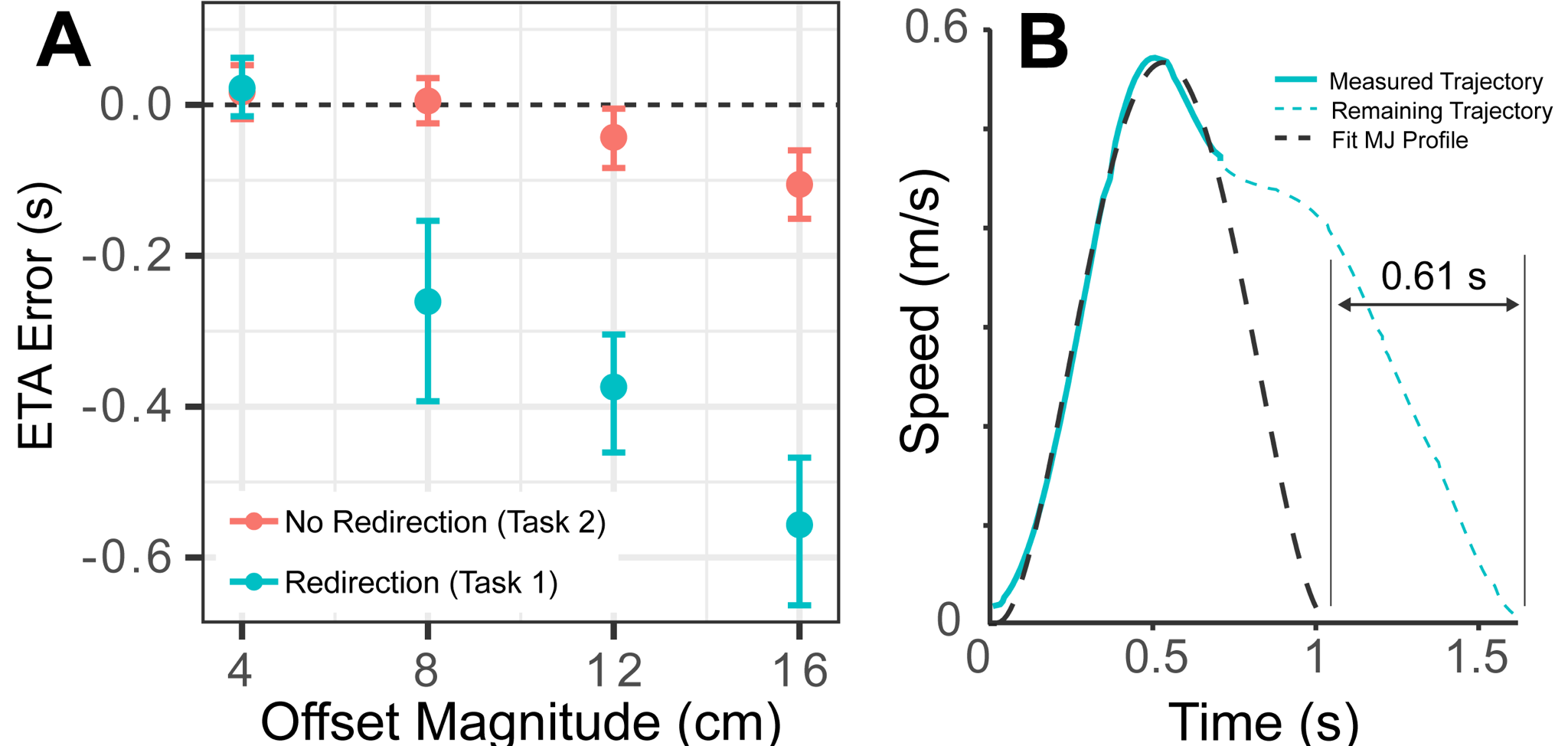Investigating the Detection of Bimanual Haptic Retargeting in Virtual Reality
Eric J. Gonzalez, Sean Follmer

Haptic retargeting is a virtual reality (VR) interaction technique enabling virtual objects to be “remapped” to different haptic proxies by offsetting the user’s virtual hand from their physical hand. While researchers have investigated single-hand retargeting, the effects of bimanual interaction in the context of haptic retargeting have been less explored. In this study, we present an evaluation of perceptual detection rates for bimanual haptic retargeting in VR. We tested 64 combinations of simultaneous left- and right-hand retargeting ranging from −24 to +24 degree offsets and found that bimanual retargeting can be more noticeable to users when the hands are redirected in different directions as opposed to the same direction.


Publications:
Evaluating the Minimum Jerk Motion Model for Redirected Reach in Virtual Reality
Eric J. Gonzalez, Parastoo Abtahi, Sean Follmer

Reach redirection in virtual reality uses spatial distortion to augment interaction with passive props as well as active haptic devices. For such dynamic physical systems, motion modeling is needed to update the interface based on users’ predicted targets & trajectories. However, it remains unclear how well standard predictive models hold under redirection. In this work we evaluate one such commonly used model, the Minimum-Jerk (MJ) model, during redirected reach at various lateral offsets up to 16 cm. Results show that larger redirection significantly worsens MJ model fit, suggesting that models should be adjusted for reaches with considerable redirection. Predicted arrival times, based on fitting an MJ model on the first half of reach data, led to an average error of -0.29 s for redirected reach, compared to -0.03 s for normal reach.

